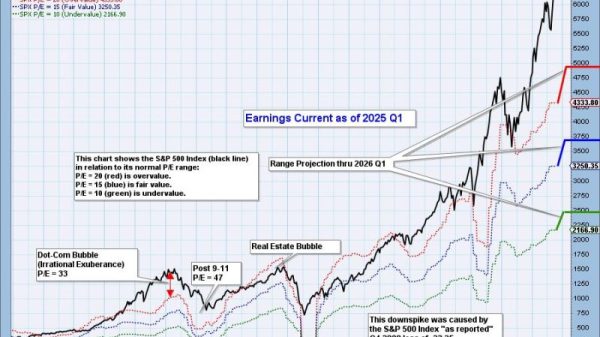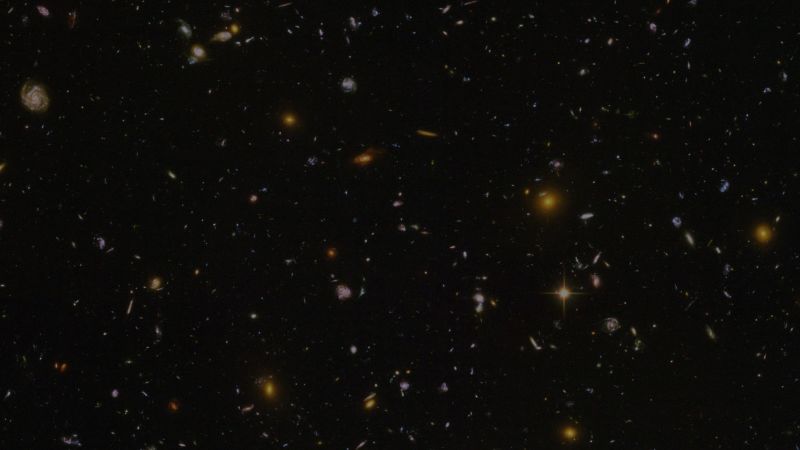Astronomers have spotted an unusual sign that a dead star feasted on a fragment of a planet orbiting it: a metal scar on the star’s surface. The revelation sheds light on the dynamic nature of planetary systems even in the end stages of a star’s life cycle — and could foretell the eventual fate of our own solar system, according to the scientists.
Planets form from swirls of gas and dust called a protoplanetary disk that surrounds a newly formed star. But as the star ages and dies, the stellar object can consume the very planets and asteroids it helped create.
Astronomers observed a dead star, known as a white dwarf, located about 63 light-years away from Earth using the European Southern Observatory’s Very Large Telescope in Chile. The observation revealed a metallic feature on the star’s surface that the researchers determined was related to a change detected in the star’s magnetic field. A new study detailing the observation appeared Monday in The Astrophysical Journal Letters.
“It is well known that some white dwarfs — slowly cooling embers of stars like our Sun — are cannibalising pieces of their planetary systems. Now we have discovered that the star’s magnetic field plays a key role in this process, resulting in a scar on the white dwarf’s surface,” said lead study author Dr. Stefano Bagnulo, an astronomer at Armagh Observatory and Planetarium in Northern Ireland, in a statement.
The white dwarf, called WD 0816-310, is an Earth-size remnant of a star that was once like our sun but larger. The stellar object acquired a noticeable dark mark on its surface, which turned out to be a concentration of metals.
“We have demonstrated that these metals originate from a planetary fragment as large as or possibly larger than Vesta, which is about 500 kilometers (310 miles) across and the second-largest asteroid in the Solar System,” said study coauthor Jay Farihi, a professor of astrophysics at University College London, in a statement.
A magnetic connection
While working with the Very Large Telescope, the team relied on its FORS2 instrument, considered a “Swiss-army knife” instrument by the researchers, to determine how the metal became part of the star. FORS2 is short for Focal Reducer/low dispersion Spectrograph 2.
As the astronomers observed the star, they noticed that the concentration of the metal they detected changed while the star rotated. Rather than being spread across the star’s surface as predicted by astronomical theory, the metal was focused in one area, said study coauthor John Landstreet, professor emeritus of physics and astronomy at Western University in Canada, in a statement.
The strength of the metal detection also synced with changes observed in the star’s magnetic field, which led the team to determine that the metal scar was located on one of the star’s magnetic poles.
The star’s magnetic field pulled the metals toward the star, which led to the presence of the scar, the finding has suggested.
“This scar is a concentrated patch of planetary material, held in place by the same magnetic field that has guided the infalling fragments,” said Landstreet, also affiliated with the Armagh Observatory and Planetarium. “Nothing like this has been seen before.”
A peculiar star
Previous observations of white dwarfs have shown the dead stars to have surfaces that are scattered with metals. The metallic features are likely from planets or asteroids that came too close to the star — much like comets that fly near the sun in our solar system.
But WD 0816-310 presents an entirely different scenario orchestrated by the star’s magnetic field. The process is similar to how auroras create bright displays near Earth’s poles as energetic particles from the sun collide with Earth’s atmosphere.
The study authors said that their observations show the dynamic actions that can take place within other planetary systems, even after the host star dies.
In about 5 billion years, our sun is expected to become a white dwarf.
But first, the golden orb will become a red giant, puffing up and expanding as it releases layers of material. Red giants form when stars have exhausted their supply of hydrogen for nuclear fusion and begin to die.
As a red giant, the sun will likely evaporate the solar system’s inner planets such as Mercury and Venus, although Earth’s fate remains unclear, according to NASA.







































